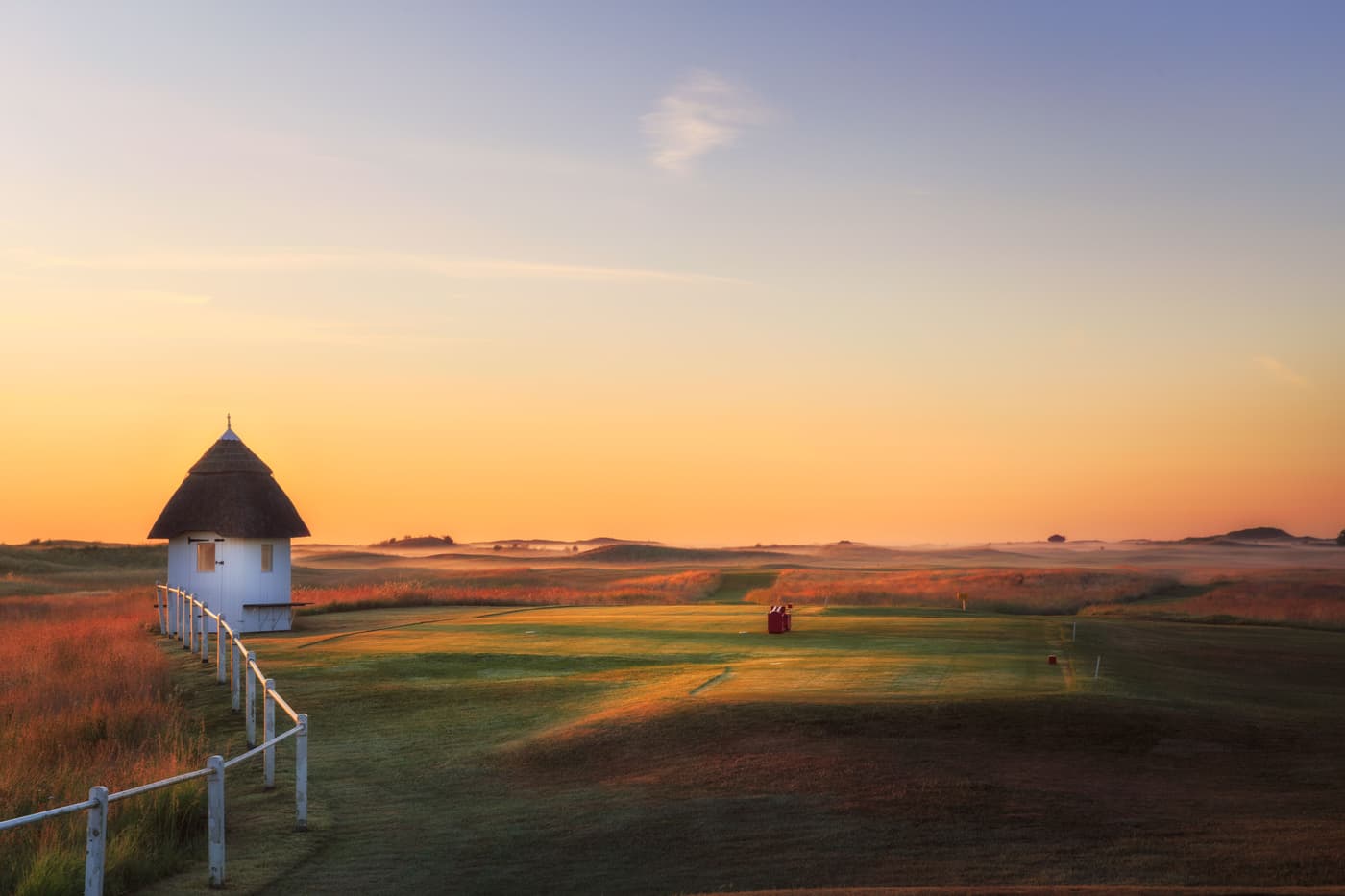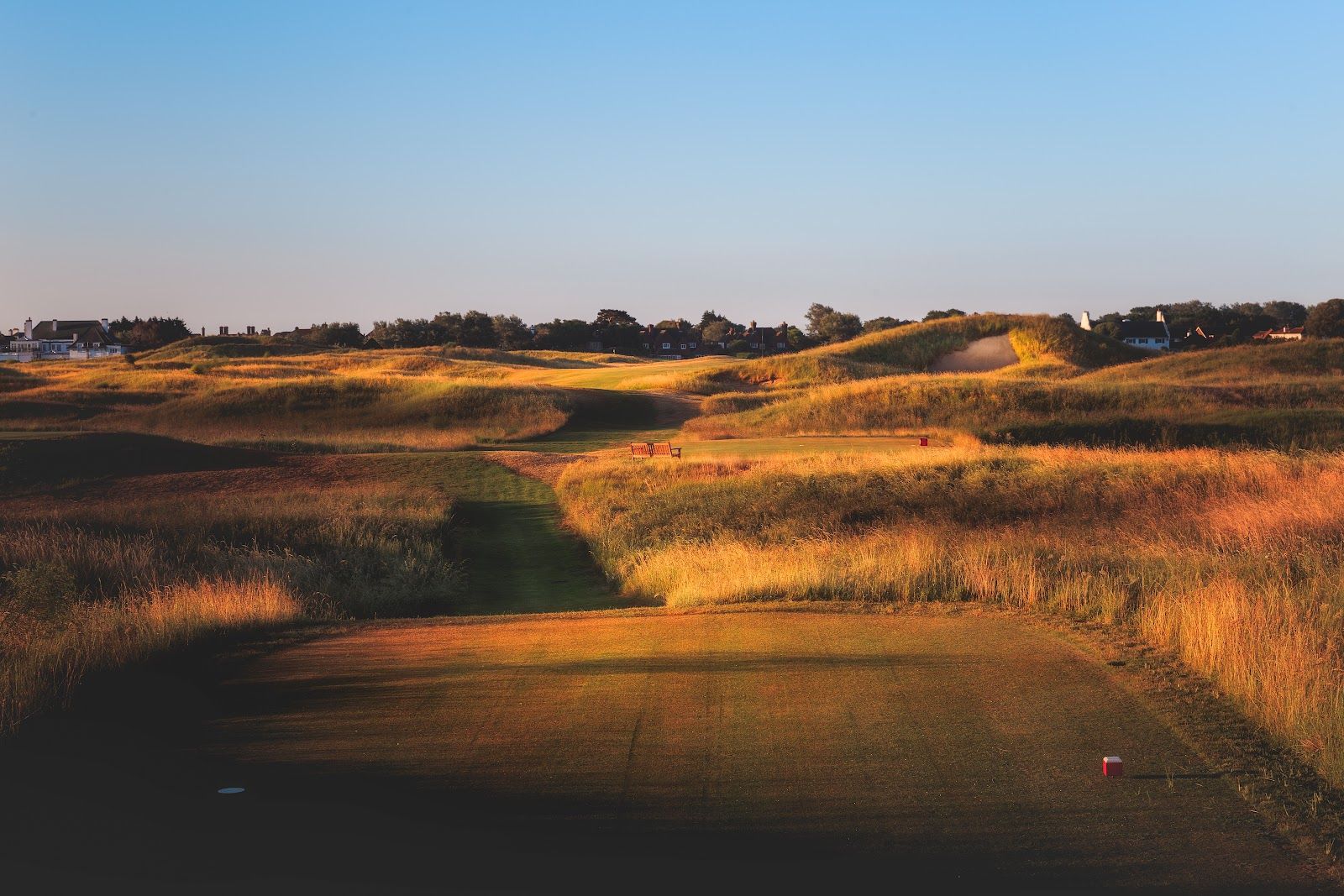- Courses
- Britain & Ireland
- England
- Kent

- AddressClubhouse, Sandwich CT13 9PB, UK
- Championships hosted
Royal St George’s was the first English course to host the Open Championship and is the fourth most used Open venue (host to 15 Opens) after St Andrews, Prestwick and Muirfield.
| Date | Winner | Country |
| 1894 | John H.Taylor | England |
| 1899 | Harry Vardon | England |
| 1904 | Jack White | Scotland |
| 1911 | Harry Vardon | England |
| 1922 | Walter Hagen | USA |
| 1928 | Walter Hagen | USA |
| 1934 | Henry Cotton | England |
| 1938 | Reg Whitcombe | England |
| 1949 | Bobby Locke | S Africa |
| 1981 | Bill Rogers | USA |
| 1985 | Sandy Lyle | Scotland |
| 1993 | Greg Norman | Australia |
| 2003 | Ben Curtis | USA |
| 2011 | Darren Clarke | N Ireland |
| 2020 | Cancelled | Cancelled |
| 2021 | Collin Morikawa | USA |
In 1885, Dr William Laidlaw Purves of Royal Wimbledon Golf Club, spotted from the vantage point of St Clement’s church a spectacular piece of undulating land with expansive sand dunes. Being a Scot and a keen scratch golfer, he decided that there was only one thing to do with this links land; create a golf course. In 1887, the course opened for play and was named 'St George’s' after the English patron saint.
"For a course that is still comparatively young," wrote Bernard Darwin in his 1910 book, The Golf Courses of the British Isles, "Sandwich has had more than its share of ups and downs. It was heralded with much blowing of trumpets and without undergoing any period of probation, burst full-fledged into fame."
After only seven years of play, in 1894, Sandwich hosted its first of fifteen Open Championships. This was the first Open to be played outside Scotland.
Royal patronage was granted in 1902 and the Prince of Wales (later King Edward VIII) became club captain. Many celebrated people have been affiliated with the club; the great golf writer Bernard Darwin was president of Royal St George’s between 1952 and 1961.
The course is not a traditional out and back layout. In a similar style to Muirfield, each nine is broadly circular, a loose figure of eight. There is nothing artificial about Royal St George’s; there is a natural look and feel to the course that blends beautifully into the surroundings, with wild flowers, dune grasses and the sweet song of the lark. Commanding views over Pegwell Bay and the white cliffs of Dover ensure an engaging experience.
All the holes are very different and memorable, a true sign of a great golf course. Royal St George’s also has some unique features; thatched roof shelters, the red cross of St George on the flags, and that bunker on the 4th hole cut into a huge dune, the UK’s tallest and deepest bunker. If you can carry that famous bunker on this 470-yard par four, then you can enjoy the peace of the fairway beyond, called the 'Elysian Fields'.
The par three 6th is called the 'Maiden'. We’ll let Bernard Darwin explain why: “There stands the ‘Maiden’ steep, sandy and terrible, with her face scarred and seamed with black timbers, but alas! we no longer have to drive over her crown: we hardly do more than skirt the fringe of her garment.” 'Suez Canal' is the 14th, so called according to Darwin because; “many a second shot has found a watery grave”. The 15th is considered architecturally to be one of the most impressive in golf because the fairway bunkers are virtually symmetrical.
"After the strategic school of golf architecture started to dominate thinking in the early 20th century, it became fashionable to criticize Sandwich as a big hitter's paradise, with too many blind shots," wrote Tom Doak in The Confidential Guide to Golf Courses. "After the First World War, some of the most famous holes were changed – the Maiden hole was re-oriented so one did not have to play up and over the famous dune, and greens like the 9th and 17th were moved from blind hollows to their present locations on grand plateaus, perhaps by Dr. MacKenzie himself."
In the mid 1970s, Frank Pennink was brought in to eliminate further blindness. Three new holes were built and tee changes were made to two other holes. Many, except for devout traditionalists, believe that these changes further improved the layout.
"Whatever petty criticisms have been leveled over the lack of visibility on some holes, or the need for good fortune to master its difficulties, Sandwich has the four prerequisites of great architecture, and it has them in spades," continues Tom Doak. "Challenging golf holes, beautifully crafted greens and bunkers, a character of its own, and stunning scenery."
Royal St George’s certainly represents one of the most difficult tests of golf, requiring courage, confidence and solid ball striking. Severely undulating fairways make good scoring very tough indeed. Often the tee shot will come to rest on an upslope or a down slope, then one needs to hit a long iron or fairway wood into the green from an uneven lie.
Ian Fleming, the author of the James Bond books, was a member here at Royal St George’s. The golf scenes from the movie Goldfinger were filmed at Stoke Park, but Fleming called the course “Royal St Marks” in the film, no doubt inspired by his home club.
Sandwich is a classic links course, summed up nicely by Bernard Darwin: “My idea of heaven as is to be attained on an earthly links”. Darwin went on to become president of the club between 1952 and 1961.
Course Reviews
Leave a Review
This course has not been reviewed.
If you have played this course, consider .
Thanks for the review
Your review has been successfully submitted and will be reviewed for approval.
Course Reviewed
You’ve already submitted a review for this course.




